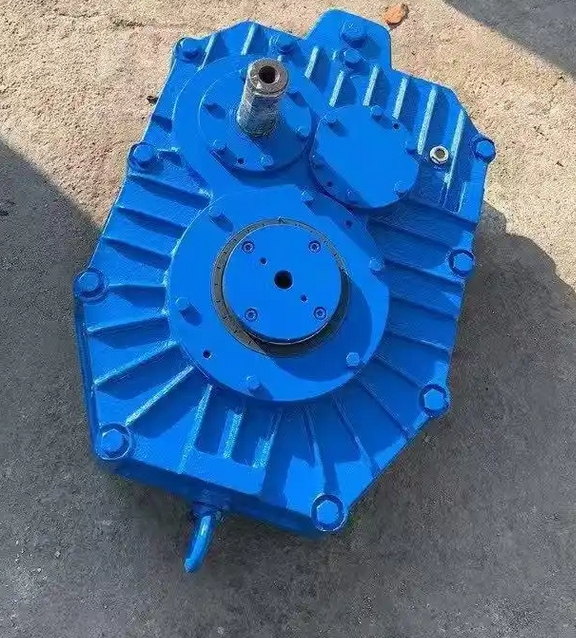Explanation of the structural characteristics of cylindrical gear reducer

The cylindrical gear reducer is a widely used equipment in the field of mechanical transmission, and its structural characteristics mainly include the following aspects:
1. Gear design
The gear design of a cylindrical gear reducer is one of its most important characteristics. The gears in the reducer are arranged vertically or obliquely, and selected according to different transmission requirements. Among them, gears arranged vertically are suitable for high-speed and low-power transmission, while gears arranged obliquely are suitable for low-speed and high-power transmission. In the design process of gears, factors such as module, number of teeth, tooth width, and helix angle need to be considered to ensure the transmission efficiency and load-bearing capacity of the reducer.
2. Shafting design
The shaft system of a cylindrical gear reducer includes an input shaft, an intermediate shaft, and an output shaft. The input shaft is usually connected to the prime mover, the intermediate shaft is used to transmit power, and the output shaft is connected to the working machine. The design of the shaft system needs to consider factors such as the diameter and length of the shaft, the selection of bearings, and the positioning and fixation of parts on the shaft. To ensure the smooth operation of the shaft system, it is usually necessary to straighten and balance the shaft.
3. Box design
The box of the cylindrical gear reducer is its main supporting structure, used for installing and fixing components such as gears, bearings, lubrication devices, etc. The design of the box needs to consider factors such as material, strength, stiffness, and heat dissipation. In order to ensure the smooth operation of the reducer and prevent external debris from entering the interior of the reducer, protective devices are usually installed on the box.
4. Lubrication device design
The lubrication device of the cylindrical gear reducer is an important component, used to ensure the normal operation of the reducer and extend its service life. The design of lubrication devices needs to consider factors such as lubrication method, selection of lubricating oil, and flow rate of lubricating oil. Common lubrication methods include oil bath lubrication, spray lubrication, and splash lubrication.
5. Sealing device design
The sealing device of the cylindrical gear reducer is used to prevent lubricating oil leakage and external debris from entering the interior of the reducer. The design of sealing devices needs to consider factors such as sealing method, sealing material, sealing structure, etc. The commonly used sealing methods include contact sealing and non-contact sealing. Contact seals mainly include oil seals and mechanical seals, while non-contact seals mainly include labyrinth seals and gap seals.
In summary, the structural characteristics of cylindrical gear reducers include gear design, shaft system design, box design, lubrication device design, and sealing device design. These characteristics are of great significance for ensuring the normal operation of the gearbox and extending its service life. In practical applications, it is necessary to choose the appropriate reducer model and structural form according to different transmission requirements and working conditions, and carry out correct installation and maintenance.




